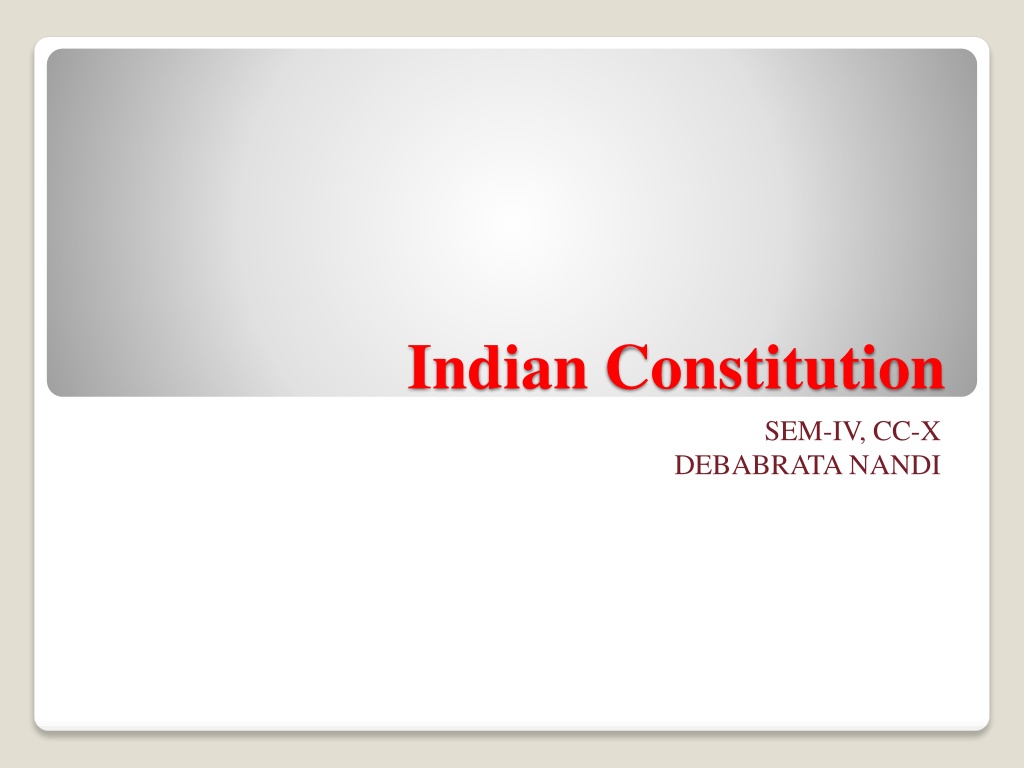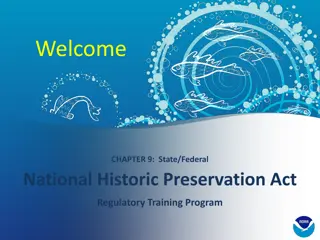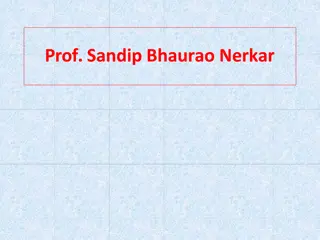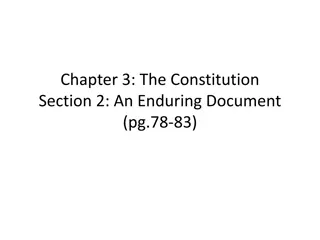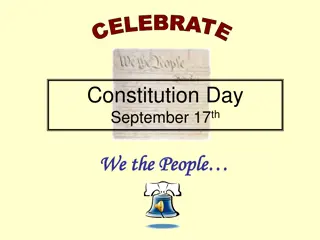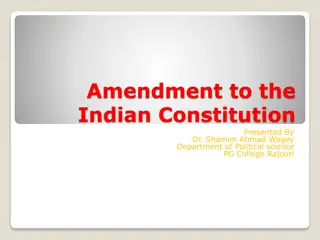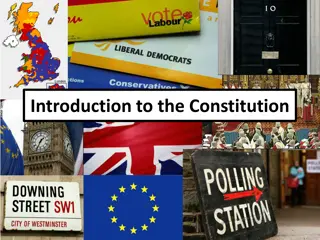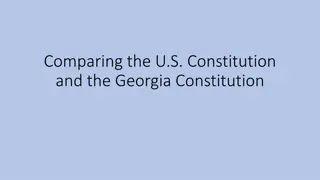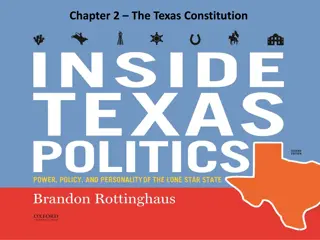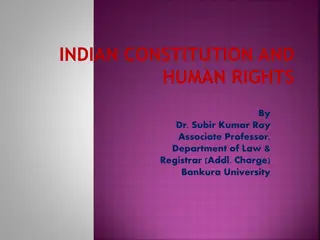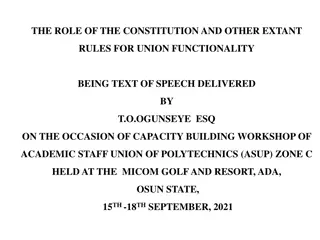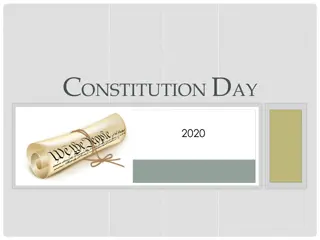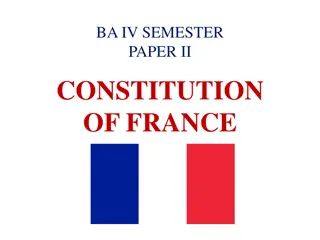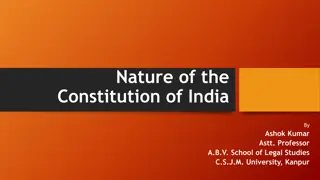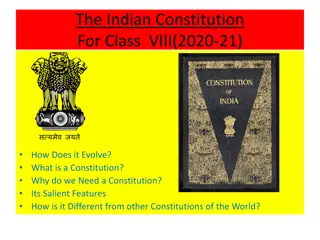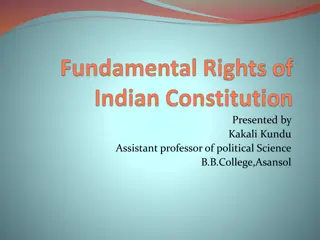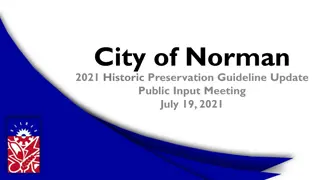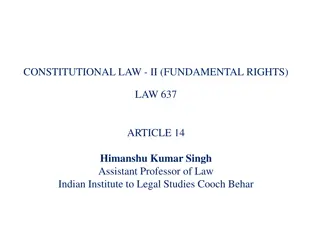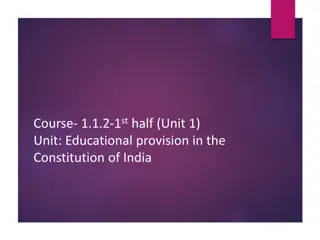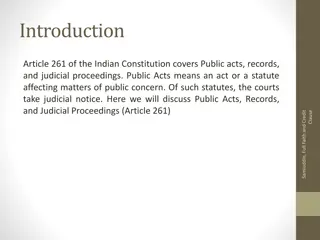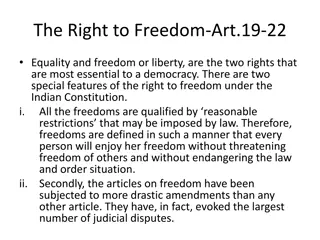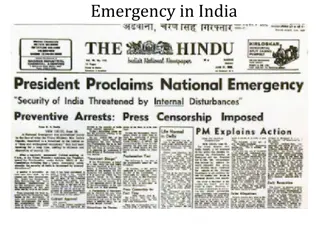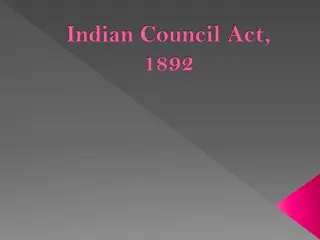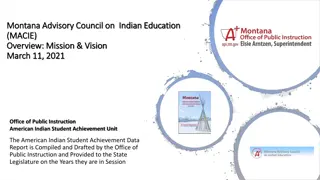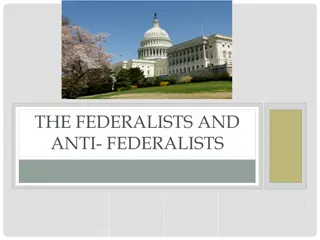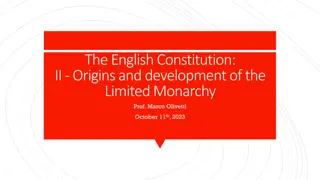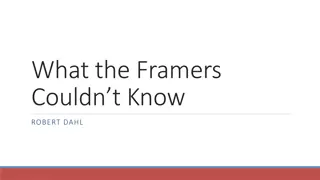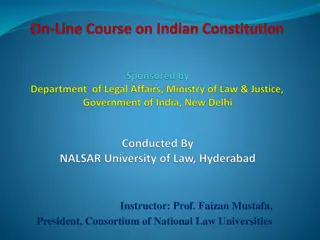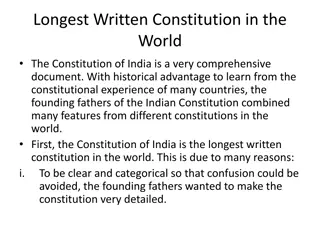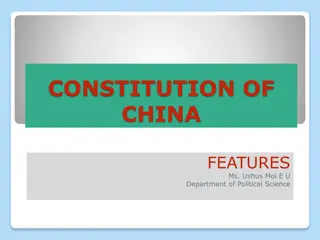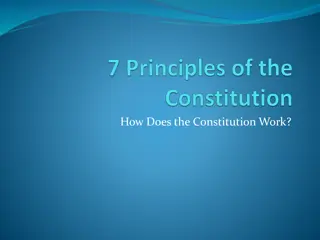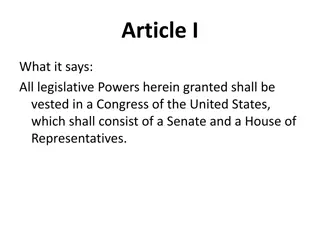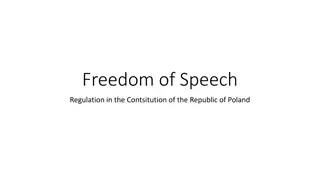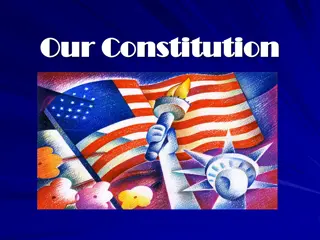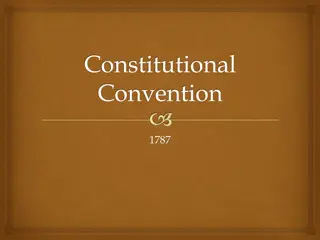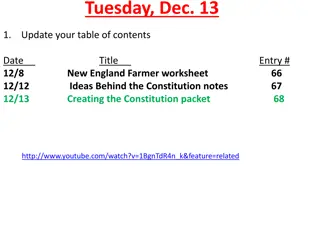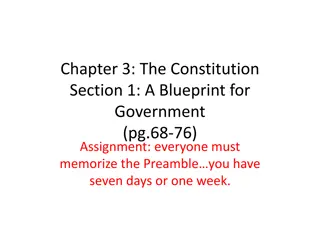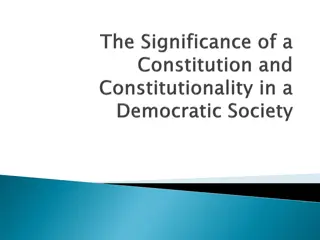Evolution of the Indian Constitution: A Historic Journey
With 395 articles and 12 schedules, the Indian Constitution, effective since January 1950, is one of the world's longest. Framed over three years from December 1946 to December 1949, the Constituent Assembly painstakingly discussed and refined drafts clause by clause. The history of the Constitution's evolution dates back decades, with significant figures like Dr. B.R. Ambedkar, Rajendra Prasad, Nehru, and Patel playing crucial roles. The assembly members faced challenges such as food scarcity, riots, refugee resettlement, and class conflicts during the drafting process. The inclusion of fundamental rights was a key aspect inherited from the Motilal Nehru Report of 1928, aiming to address minority fears within a democratic framework.
Download Presentation

Please find below an Image/Link to download the presentation.
The content on the website is provided AS IS for your information and personal use only. It may not be sold, licensed, or shared on other websites without obtaining consent from the author. Download presentation by click this link. If you encounter any issues during the download, it is possible that the publisher has removed the file from their server.
E N D
Presentation Transcript
Indian Constitution SEM-IV, CC-X DEBABRATA NANDI
With 395 articles and 12 schedules the constitution of India is probably the longest in the world. coming into effect in January 1950 it was framed over a period of three years between December 1946 and December 1949. Its drafts were discussed clause by clause in the constituent assembly of India. In between the sessions the work of revising and refining the drafts were carried out by various committees and sub-committees. The process of evolution of constitution began many decades before 26 January 1950.
The first meeting of the Constituent Assembly was held on 9 December 1946 which has been considered as a historic day. It was on this day constituent assembly began its first session.
the fundamental rights in the constitution was imperative as it had figured in the Motilal Nehru Report of 1928. It not only represented advanced democratic thought but was also a convenient way of setting at rest the fears of minorities
The Constituent Assembly met between 1946 and 1949 against a backdrop of food scarcity, religious riots, refugee resettlement and class war. The CA had more than 300 members. In his magisterial history of the Indian constitution G. Austin identifies twenty as being the most influential. Among the congress members three most important leaders who played a crucial role in the Constituent Assembly were the Rajendra Prasad, Nehru and Patel. Dr. Rajendra Prasad was elected as the chairman/President of the assembly. Nehru delivered his first major speech in the assembly on 13 December 1946 when he moved the objective resolution
Dr. B.R Ambedkar. He was the chairman of the drafting committee of the Indian Constitution. Two other prominent leaders with him were K.M Munshi and Alladi Krishnaswami Aiyar. B.N Rau served as constitution advisor to the government of India.
The constitution of India provides a framework for a democratic and parliamentary form of government. India is to be a federal nation. The principle of federation was adopted with a provision of strong centre. The sphere of influence was divided into three parts union, state and concurrent. The basic philosophy of the constitution, its moving spirit is to be found in the preamble. The preamble was based on the objective resolution drafted by Nehru on 13 December 1946..
. The preamble states that the people of India in the constituent assembly made a solemn resolve to secure to all citizens, justice, social, economic and political; liberty of thought, expression, belief, faith worship, equality of status and opportunity, to promote among them all fraternity assuring dignity of an individual and the unity of nation.
Granville Austin argues that the core of the commitment to the social revolution lays in part III and IV in the fundamental rights and in the directive principles of state policy
The intention behind the inclusion of the Directive principles contained in article 38 which says that state shall strive to promote the welfare of the people
